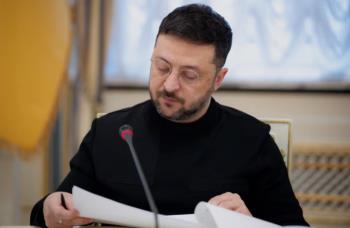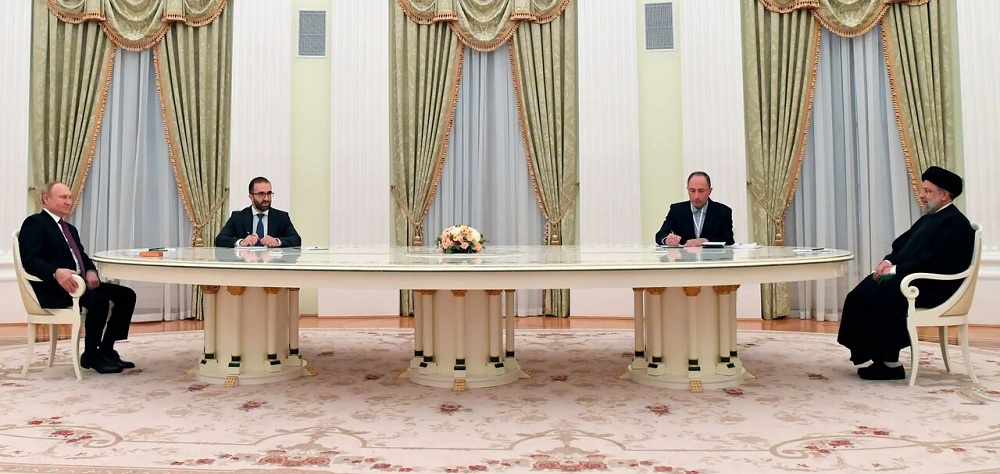Alwaght- After important visit of the Iranian Foreign Minister Hussein Amir-Abdollahian visit to China last week with a focus on expansion of ties between the two countries, Iran's President Sayyed Ibrahim Raeisi visited Russia to leave a considerable mark in his presidency record before first complete year in office.
The relationship between Iran and Russia as two historical neighbors and important and influential countries in the international developments in the past decade unprecedentedly moved to boost. With assumption of office by President Raeisi and his special attention to the East, the trip to Moscow and its outcomes must be thought to be opening a new page in the two countries' relations. In addition to the results and discussions of the visit, the very nature of invitation of President Raeisi by his Russian counterpart Vladimir Putin a few months after new administration in Iran came to power and also the reasons behind the invitation are worth focusing on.
Bilateral requirements and interests of alliance with the East
One of the important issues that can be considered in examining the nature of the Iranian president's visit to Moscow is Iran's presence in the East camp, which has two elements; one is Iran's look to the East and the other is Iran's role in improvement of the camp.
In other words, in recent years there has been a dual view between Iran and the major Eastern powers, including Russia, China, and even India, to develop relations and form alliances, each of which has the requirements and benefits that such an alliance would pursue.
On the one hand, while global analysts call the 21st century the century of the decline of Western hegemony and the century of Asia, the Islamic Republic of Iran has taken an Eastern-leaning approach in line with the Supreme Leader Ayatollah Sayyed Ali Khamenei instructions. According to World Bank reports, of the top six economic powers in 2040, four will be non-Western and include China, India, Japan, and Russia.
The emergence of China as the future economic, scientific and technological power, as well as the common interests in Tehran's international cooperation with Russia and China in the face of Western unilateralism, hegemony, and interventions are the main drivers of the Iranian pivot to East. China is both an important state by itself and a member of the largest economic organizations, including the new bloc which is called Regional Comprehensive Economic Partnership. Seeing this rise, the world countries are both seeking to redefine their relations with China and to participate in economic and possibly political alliances in Asia. Also, today, all countries of the world are competing for access to trade highways, and basically new competition between countries is taking place on these highways, including important transit programs such as China's One Belt, One Road Corridor and the North-South Corridor which near a historic opportunity for Iran to benefit from.
From another perspective, for various reasons, absorption of Iran in the East axis is also of strategic importance for Russia and China. Evidence of this is approval of Iran in economic organizations such as Shanghai Cooperation Organization (SCO), signing of free trade agreements with the Eurasian Union whose members are Armenia, Belarus, Kazakhstan, Kyrgyzstan and Russia in 2019, and possibly in the future with BRICS, organization of Brazil, Russia, India, China South Africa economic cooperation.
In the past, the four-decade hostility between Iran and the US has always been cited as the most prominent obstacle when talking about the hurdles to Iran's official admission to the SCO. But the official admission of Iran to the massive cooperation organization last September showed that Tehran is now seen to have an important position in promoting the East axis.
First, for China and Russia, Iran's role in countering US hegemony is key. The US is a country surrounded on both sides by the ocean. Thus, the instrument of this country to maintain, control, and expand hegemony is naval power, which ultimately leads to domination of the ocean. When the great powers want to fight American hegemony, they look at Heartland, a region covering parts of West Asia and seen as the heart of the world, and turn their full attention to finding ways to control Eurasian part of Heartland. The New Silk Road initiative is an attempt in exactly the same direction, and although China was the originator of this initiative, it is not the only actor in it.
Russia has also been trying to dominate the Heartland coasts since 2000 as a Heartland power. It has been pursuing this goal through North-South Corridor. This corridor enters Azerbaijan's Baku from Iran's Astrakhan and after passing through Iran and connecting to Bandar Abbas and Chabahar ports, it stretches towards India.
Second, as the Biden administration, like the Trump’s, has focused its core foreign policy strategy on containing China, Iran is important to the Chinese government for a variety of reasons. The first factor in Iran's importance to China is its access to the Persian Gulf and its energy resources. Second, it is only Iran that pursues and has always pursued independent energy policies; to the extent that it is not comparable to Saudi Arabia or the UAE in this regard. The Russians, who have longed for warm waters for centuries and have sought to regain influence in the Arab world for the past two decades under Putin, see cooperation with Tehran as a bridge to success.
What were goals, subjects of discussions between Raeisi and Putin?
Strengthening cooperation between the two countries in economic, political, military, and cultural sectors was the focus of the Iranian president's talks with Russian leader. The showcase of the upgrading level of cooperation is the preparation for signing the 20-year "Strategic Partnership Agreement" document. The 2001 cooperation agreement expired in 2021 but was extended automatically for five more years. However, the two countries are seeking to tailor the agreement to suit the new world conditions. The strategic cooperation deal is a fruit of this vision.
During the visit, the agreement was not signed, said the Iranian officials, but talks with Russia can bolster economic exchanges and pave the way for Iran permanent Eurasian Economic Union (EEU) membership.
At present, according to Ebrahim Rezaei, head of the Iran-Russia parliamentary friendship group, the trade volume between the two countries is about $3 billion. Both are unhappy with such level and discussed its rise in their negotiations. Given the sanctions imposed by the West on Moscow and Tehran, strengthening economic cooperation could be very effective in neutralizing the sanctions.
Regional developments was also a top agenda of the two presidents. Syria and Afghanistan crises and ways to settle them, continuation of fight against terrorism, and protection of peace and stability in South Caucasus are areas where Moscow and Tehran are engaged in a close coordination.
Another important aspect of President Raise's visit is discussion of nuclear deal between Iran and world powers underway since late November. So far no mentionable progress was made in the talks, but Russia and China play an active role in bringing the US and Europe to obligation of commitment to lifting the anti-Iranian sanctions.



























